
Archon: The Light and the Dark is a 1983 video game developed by Free Fall Associates and one of the first five games published by Electronic Arts. It is superficially similar to chess, in that it takes place on a board with alternating black and white squares, but instead of fixed rules when landing on another player's piece, an arcade-style fight takes place to determine the victor, and each piece has different combat abilities. The health of the player's piece is enhanced when landing on a square of one's own color.

Tron is a coin-operated arcade video game manufactured and distributed by Bally Midway in 1982. The game consists of four subgames inspired by the events of the Walt Disney Productions motion picture Tron released earlier in the summer. The lead programmer was Bill Adams. The music programmer was Earl Vickers.

Barbarian: The Ultimate Warrior is a 1987 video game developed and published by Palace Software for the Amstrad CPC, Commodore 64, and ZX Spectrum. The game was ported to many other systems and was licensed to Epyx who published it as Death Sword in the United States.

Tanktics: Computer Game of Armored Combat on the Eastern Front is a 1976 two-player tank battle computer wargame by Chris Crawford. It was Crawford's first video game. He initially self-published it as Wargy I. It was published by Avalon Hill in 1981 as Tanktics.

Archon II: Adept is a strategy/action video game developed by Free Fall Associates: Jon Freeman, Paul Reiche III, and Anne Westfall. It was published in 1984 by Electronic Arts for the Atari 8-bit computers and Commodore 64. Ports followed for the Apple II, Amstrad CPC,ZX Spectrum, and Amiga.
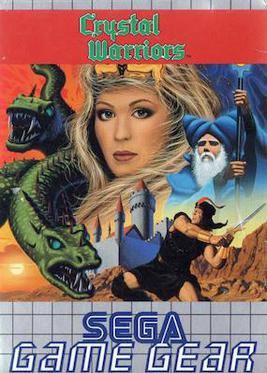
Crystal Warriors is a turn-based strategy video game developed and published by Sega for the Game Gear in Japan in 1991 and in Europe and North America in 1992. It was re-released for Virtual Console in 2013. A Japan-only sequel Royal Stone was published in 1995.

The Bilestoad is a fighting video game by Marc Goodman for the Apple II and published in 1982 by Datamost.

Released in 2003, Ophidian: 2350 is a collectible card game (CCG) created by Ophidian Games and Fleer. It uses a play structure called the Flow rather than the normal turn-based system typically used in the genre.
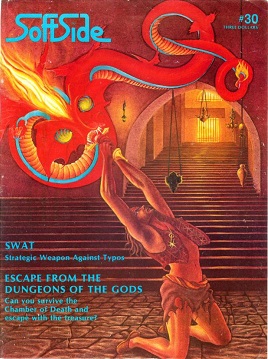
SoftSide is a defunct computer magazine, begun in October 1978 by Roger Robitaille and published by SoftSide Publications of Milford, New Hampshire.

Moebius: The Orb of Celestial Harmony is a video game produced by Origin Systems and designed by Greg Malone. It was originally released in 1985 for the Apple II. Versions were also released for the Amiga, Atari ST, Commodore 64, Macintosh, and MS-DOS. The game is primarily a top-down view tile-based role-playing video game, but it has action-based combat sequences which use a side view, roughly similar to games such as Karateka.
Dofus Arena was a free turn-based strategic online game and was the second game of Ankama Games. It was a PvP game based on the story of Dofus. Dofus Arena incarnates the essence of DOFUS's gameplay, featuring increasingly difficult tactical fights. As a coach, each player creates and manages their own unique team of characters, enabling him to face opponents of all kinds, in different elements.
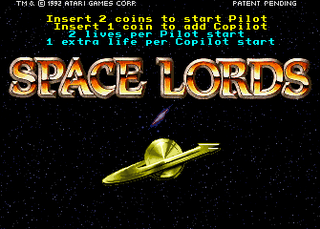
Space Lords is a video game released in arcades by Atari Games in 1992. It is a first-person perspective space combat video game.
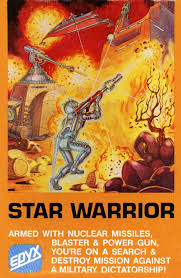
Star Warrior is a 1980 science fiction role-playing video game written and published by Automated Simulations for the Apple II, TRS-80, and Atari 8-bit computers. The game is branded as part of the Starquest series, consisting of Star Warrior and the otherwise unrelated Rescue at Rigel.

Invasion Orion is a 1979 science fiction strategy game written and published by Automated Simulations. It is one or two player sequel to the original two-player Starfleet Orion which was published in late 1978. The game was written in BASIC for the Commodore PET and TRS-80 and ported to the Atari 8-bit computers and Apple II.
Duel II, formerly Duelmasters, is a play-by-mail game run by Reality Simulations, Inc. (RSI), where players, called managers, design and run up to five warriors per team against other managers. The game, originally titled Gladiators, and later changed to Duelmasters before settling on its current name of Duel II, has been running since at least 1985. It has been cited by Greg Lindahl's PBM page as one that is most talked about and has been a standard against which other gladiatorial PBM games have been measured. It is credited with inspiring at least one online gladiator game called Gladiator.
Little Fighter 2 is a Hong Kong freeware PC fighting game for Windows and is the sequel to the game Little Fighter. Little Fighter 2 was created by Marti Wong and Starsky Wong in 1999, and received a long series of updates.
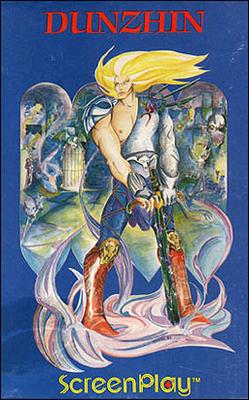
Warrior of Ras: Volume I - Dunzhin is a fantasy role-playing video game developed by Med Systems Software. It was released on the TRS-80 in 1982, then ported to the Apple II, Atari 8-bit computers, and Commodore 64. A self-booting IBM PC port added digitized speech.
Knights and Warriors is an American competition television program that premiered in syndication on September 19, 1992. The program aired on weekends for one season, with episodes airing until September 11, 1993. The show was a production of Welk Entertainment Group, and was distributed by Western International Syndication.
The Genius: Black Garnet is the third season of The Genius. It debuted on tvN on October 1, 2014.

FS1 Flight Simulator is a 1979 video game published by Sublogic for the Apple II. A TRS-80 version followed in 1980. FS1 is the first in a line of simulations from Sublogic which, beginning in 1982, were also sold by Microsoft as Microsoft Flight Simulator.














